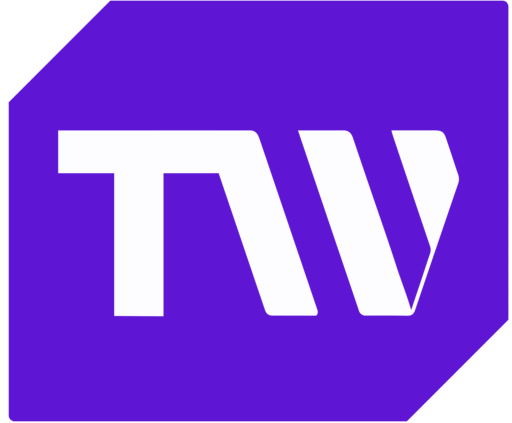2025 Success Handbook: A Content Guide for Companies In The Age of AI
In this article.
This article primarily focuses on the Generative AI branch of artificial intelligence. Also, ‘machine’ and ‘models’ are used interchangeably all through.
Quick Overview
The concept of Artificial Intelligence has existed since the 1950s. However, it became mainstream recently due to publicly available tools such as OpenAI’s ChatGPT. Many users still find the concept vague, and that’s why it is important that I start this article with a clear definition of this technology.
AI is a branch of computer science that centers on creating machines that can perform tasks that would ordinarily require human intelligence—such as drawing insights, reasoning, and even learning new things. An example of its application is ‘Generative AI’ through apps like ChatGPT, which are capable of creating complex text and images similar to those created by a human.
However, artificial intelligence has many use cases beyond that of generative AI alone. I’ll break these use cases into six broad categories according to Statista’s market report, and these are shared below:
- Generative AI (Gen AI): The AI branch is involved in the creation of machines that can generate complex content such as text, images and videos. Examples are ChatGPT and Gemini.
- Natural Language Processing AI (NLP AI): AI branch involved in the creation of models that can read, understand, and generate human languages. An example is Apple’s Siri.
- Machine Learning AI (ML AI): AI branch involved in developing models that can learn from data. An example is TensorFlow.
- Computer Vision AI: AI branch involved in the creation of models that can scan and interprete visual data such as images and videos.
- Autonomous & Sensor Technology AI: AI branch involved with the creation of machines that can detect and respond to changes in the natural environment.
- Robotics: A more advanced AI branch involved in the creation of machines that can perform a range of mental and physical tasks autonomously.
Market Trends
As highlighted earlier, artificial intelligence has recently received mainstream recognition due to popular tools such as Open AI’s ChatGPT, which was launched on November 22nd, 2022. The announcement had a mass appeal to the public and witnessed a record number of signups in its first week.
However, it wasn’t only internet users that this new advanced tool took by storm. Dominant industry players such as Aphabet Inc’s Google also had to roll up their sleeves to catch up with the new wave or risk losing their prized position. A plethora of announcements, partnerships, and investments soon followed– from the big players and a new generation of AI startups.
According to reports, this growth trend is expected to continue as artificial intelligence technology becomes more popular among internet users.
According to Statista, the AI market size will grow to $826.76 billion by 2030
Projections also show that the Generative AI market will grow to $356 billion.
Insights further reveal that the Generative AI market will make up about 43% of the total AI market size by 2020. This is about ten times the current market size and represents tremendous growth in the area. Interpreting this further, it means that many more internet users will adopt Generative AI tools such as ChatGPT and Gemini AI in their daily lives, and these tools will evolve rapidly to accommodate this increasing patronage.
Impact on Content Marketing
Generative AI tools, such as ChatGPT, have two main use cases. They help create content and provide answers to queries in a conversational manner. Although there are several limitations to how effective these tools are in addressing both applications, many of the challenges will likely be fixed over time.
Let’s take creating content as an example. Some of the limitations here are inaccurate and generic information. In the case of providing answers, some of the limitations are outdated content and biased answers.
Once these are out of the way, the cost of creating and accessing information will become much cheaper. Naturally, billions of internet users will take advantage, and the web will also become a big dump site for AI-generated content.
AI users projected growth trend.
To address this, industry stakeholders such as Alphabet’s Google and OpenAI will begin to factor in the name behind these contents more. I captured the expected aftermath better in a LinkedIn post I shared in the past, which I’ll quote;
“The cost of quality will reduce, and the price of authority will increase. In a world where anyone can create 100s of pages of content in minutes, the real value will shift from what’s in those pages alone to more of the name behind them.”
Ultimately, creating and accessing content will become easier, but standing out will be more difficult. Companies will need to work with vetted and authoritative creators. However, the work doesn’t end there for those who want to take complete advantage.
Recommendations for Success in 2025
Organic traffic through content marketing is one of the cheapest and most effective ways to build your brand over time, and this will remain in the new age of AI as well. In fact, SearchGPT (ChatGPT’s latest feature) now connects readers who want to learn more to websites with the most relevant content to share. Thus, companies with the right content strategy can benefit greatly in this fast-growing market.
Moving on, companies will require a more intensive approach to their content to differentiate their brand, build authority, and also continue to capture the attention of potential customers. Some of my recommendations to achieve these are:
Invest more in product-company-led content
Surface-level content will no longer offer good returns on investment. Typically, AI apps will provide this level of information more readily. Companies will need to step up their content game by creating more in-depth pieces that engage their customers’ pain points and position their product as the ideal solution. As explained earlier, the names behind these pieces will also matter more.
Repurpose created content for other media
Content repurposing has always been one way businesses can extract the maximum value from their investments. It involves curating already-created content into formats that can be shared on other media, such as email and social media.
This is vital as a growing number of internet users are relying on other platforms, such as Instagram and TikTok, as a part of their buyer journey, as highlighted in a previous report.
Publish new research with unique POVs
Fresh research provides a new light on existing problems. It serves as an opportunity to educate customers further and build long-term loyalty. Furthermore, it’s an excellent way to attract new customers through inbound organic traffic.
By combining these strategies, companies can continue to engage their existing customer base, attract new ones, and ultimately get the best returns on their investments in content marketing in this new age of AI.


